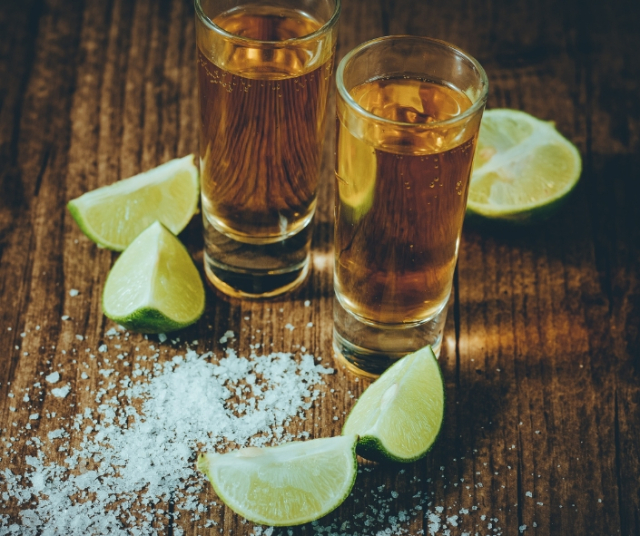Tequila , Mexico's iconic spirit, is known for its distinctive flavor and ability to deliver unforgettable moments. Over the years, it has gained popularity around the world and has become an essential drink in mixology culture. But how much do you really know about tequila?
History of Tequila
The history of tequila is a fascinating narrative that spans centuries and is intertwined with the culture and tradition of Mexico. Its roots date back to pre-Columbian civilizations, where indigenous people used the agave plant to create fermented beverages. These drinks, known as "pulque," were considered sacred and played an important role in religious ceremonies.
However, tequila as we know it today began to take shape during the time of the Spanish conquest in the 16th century. The Spanish colonizers brought with them distillation, a technique that allowed the concentration of the alcohol in these fermented drinks. Over time, this distillation gave rise to a stronger, purer drink that became known as "Tequila mezcal," in reference to the Tequila region of Jalisco, Mexico, where it was first produced.
Modern tequila is distilled primarily from blue agave, a variety of agave that grows in and around the Jalisco region. As tequila production and distillation evolved, the Tequila Denomination of Origin (DOT) was established in 1974 to regulate its production and ensure its quality. This marked an important milestone in its history, helping to establish its reputation as a drink of high quality and authenticity throughout the world.
Today, tequila is an iconic drink of Mexico and a symbol of Mexican culture around the world. Its rich history and evolution over the centuries have given it a special status among spirits, and its production remains a combination of tradition and modern technology. Every sip of tequila is a reminder of the history, passion and dedication that has contributed to its lasting legacy.
Types of Tequila
Tequila is produced in a variety of styles and types, each with its own unique characteristics and flavors. Next, we will analyze the most common types of tequila:
Blanco Tequila (Silver or Silver)
Blanco tequila is known for its purity and freshness. It is distilled directly from the agave and bottled without aging in oak barrels. This results in a crystalline tequila with a clean and crisp flavor, with notes of fresh agave and citrus. It is ideal for cocktails such as margaritas and palomas.
Young Tequila (Gold or Gold)
Young tequila, sometimes called "gold," is a blend of blanco tequila with aged or aged tequila. Coloring and sweeteners are often added to give it a richer appearance and flavor. However, it is not as appreciated by connoisseurs as other types of tequila due to its lower quality and authenticity.
Reposado Tequila
Reposado tequila is aged in oak barrels for a period of time ranging from two months to a year. During this time, it takes on subtle flavors and colors of the wood, such as notes of vanilla and caramel. It has an impressive balance between the freshness of the white and the complexity of the añejo, making it perfect for drinking neat or in cocktails.
Añejo Tequila
Añejo tequila is aged in oak barrels for a minimum of one year, giving it a deep golden color and a smooth, complex flavor. Flavors of vanilla, caramel, dried fruits and spices are common in this type of tequila. It is a popular choice to enjoy neat or in tasting glasses.
Extra Añejo Tequila
Extra aged tequila is the most aged of all, with a maturation period of at least three years in oak barrels. This results in an exceptionally smooth and complex tequila, with a complexity of flavors that resembles whiskey or brandy. It is appreciated by connoisseurs and is drunk alone to appreciate its nuances.
Cristalino Tequila
Cristalino tequila is a hybrid between white and añejo tequila. It is aged in oak barrels and then undergoes a filtration process to remove color and impurities. This produces a crystal clear tequila with the smoothness of anejo and the freshness of blanco.
How to Enjoy Tequila
Enjoying tequila is an art in itself. Here are some tips on how to fully appreciate this drink:
- Tequila tasting: Like wine, tequila can be tasted to appreciate its flavors and aromas. Observe its color, smell its aroma and savor its flavor notes.
- Serve properly: Tequila is typically served in a short glass or a little wheel. It is often accompanied by a chaser, such as sangrita or a slice of orange with cinnamon and salt.
- Pairing: Tequila can pair well with a variety of foods, such as tacos, ceviche, guacamole, and grilled meats. Experiment to discover your favorite combinations.
- Cocktails: Tequila is a versatile ingredient in cocktails. Try a margarita, paloma, tequila sunrise or simply enjoy a reposado or añejo tequila neat or on the rocks.
- Drink in moderation: Tequila is an alcoholic beverage and should be enjoyed responsibly. Drink in moderation and never drive under the influence of alcohol.
Tequila is much more than a drink; It is a manifestation of the rich Mexican culture and a product of tradition and craftsmanship. With a wide variety of types and styles, tequila offers something for everyone, from lovers of fresh, crisp flavors to connoisseurs seeking complexity and smoothness. The next time you raise a glass of tequila, do so with appreciation for the history and craftsmanship that goes into every sip. Health!
